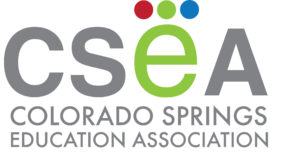What are stipends?
- Definition in the Master Agreement: “All remuneration paid a teacher in addition to the regular contract salary for extra work performed as set forth in Article XV.”
- Article XV: “Stipends are intended to focus some of teacher compensation on ancillary activities that teachers perform and that CSEA and the Board of Education have identified as valuable to District 11. These include providing support to the educational mission, enrichment opportunities to students, and supplementary services and activities beyond the normal contract.”
- Stipends are teacher monies for specific, voluntary activities performed outside the normal scope of a defined position and sometimes during non-work hours (e.g. before/after school, planning, or lunch). This may include the duties of department chairs, building leadership teams, coaching, sponsoring clubs, and more,
- Stipends often differ among high schools, middle schools, and elementary schools based on functions of each education level.
Timeline / Deadlines for Stipends
- October 1 – Submit building-approved, ESP Stipend Waivers for fall semester
- Early October – Stipend payments must be entered for fall stipend; email is sent out with deadline each year
- December 1 – Fall stipend payments on December 1 paychecks
- December 15 – Schools complete approved club list for spring semester; additional clubs can be added if needed
- February 1 – Submit building-approved, ESP Stipend Waivers for spring semester
- Early April – Stipend payments must be entered for spring semester; email is sent out with deadline each year
- May 15 – Schools complete approved club list for fall semester; additional clubs can be added if needed
- June 1 – Spring stipend payments on June 1 paychecks
Stipends during COVID
- Since stipend money is teacher money, CSEA strongly encourages virtual clubs while we follow COVID restrictions. This money should go to teachers, not be allowed to revert to the general fund, at the end of the year.
- Many schools did not payout their first semester club and activity stipends this year. These schools should payout both semesters’ stipends at the end of the school year, even though teachers will be earning more money for clubs then normal. Again, this is teacher money.
Clubs and Activities – XV.D
- Schools receive specific amounts of money each year for clubs and activities. Clubs and activities are defined as being enrichment, such as craft club or coding club, as opposed to an extension of the instructional day, like homework club.
- Again, stipends are teacher money, so bargaining unit members should sponsor the clubs and only teachers may create stipended clubs and activities. Waivers for non-teachers to receive stipends for running clubs are strictly temporary, intended to bridge a gap between teachers, and must be approved by the CSEA Board of Directors.
- Club examples (many can be in-person or virtual):
- Virtual clubs some schools are currently offering: book, Battle of the Books, math, kindness, service, art/craft, coding, sign language, Spanish, Prodigy, STEAM, multi-cultural, airplane, games, a readers theater club, learning the recorder (all grade levels), Crazy 8s (Math club with free lessons and materials)
- In-person examples: all clubs in the last bullet plus outdoor clubs, Fun with Food, Legos
How are elementary club and activity stipends determined?
- Deciding how club and activity money is distributed is defined in the Master Agreement as a collaborative process achieved in one of two ways:
- The entire bargaining staff along with the principal may decide on criteria for clubs, activities and distribution.
- The bargaining staff may appoint a committee to decide criteria for clubs, activities and distribution.
- Schools typically distribute stipends one of two ways:
- Based on the number of hours a sponsor works with students outside the defined school day, which can include lunch time, or planning time.
- Prorated based on the number of students in the club in relation to the number of students times the hours a sponsor works with students.
- Hours must be contact hours, not planning hours.
- Examples of stipend processes and stipend guidelines:
NOTE: These are samples. Each school determines their own process and guidelines. Some are more structured than others.
